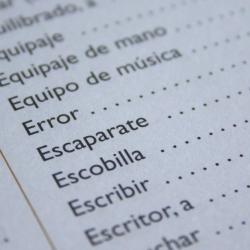How to Use Active Recall and Spaced Repetition for Better Learning
In the quest for effective studying and long-term retention of information, two powerful techniques stand out: active recall and spaced repetition. Both methods are grounded in cognitive science and have been proven to significantly enhance learning outcomes. Whether you're a student preparing for exams, a professional aiming to master new skills, or a lifelong learner, incorporating these strategies into your routine can transform your ability to retain and apply knowledge.
Understanding Active Recall
Active recall is a learning strategy that involves actively stimulating your memory during the learning process. Rather than passively reviewing information, such as re-reading notes or textbooks, active recall requires you to retrieve information from memory. This could involve testing yourself with questions, writing down everything you know about a topic, or teaching the material to someone else.
The effectiveness of active recall lies in its ability to strengthen neural connections. Each time you retrieve information from memory, you reinforce the pathways associated with that knowledge, making it easier to recall in the future. This process not only improves memory retention but also enhances your ability to apply knowledge in different contexts.
Implementing Active Recall
-
Use Flashcards: Create flashcards with questions on one side and answers on the other. Go through the flashcards, attempting to recall the answer before checking it. Digital flashcard tools like Anki can be particularly effective as they allow you to organize and categorize your cards.
-
Practice Retrieval: After studying a section, close your notes and try to write down everything you remember. This can be done in the form of a mind map or a free-flowing essay. The key is to actively engage your memory.
-
Teach Others: Explaining what you've learned to someone else is one of the most effective ways to reinforce your understanding. This process forces you to organize your thoughts and identify any gaps in your knowledge.
Understanding Spaced Repetition
Spaced repetition is a technique that involves reviewing information at gradually increasing intervals. This method is designed to combat the forgetting curve, a concept introduced by psychologist Hermann Ebbinghaus, which illustrates how quickly we forget information after learning it. By spacing out review sessions over time, you can significantly enhance retention and reduce the amount of information lost.
Implementing Spaced Repetition
-
Plan Review Sessions: After learning new material, schedule subsequent review sessions. Initially, these sessions should be close together (e.g., after a day or two) and then spaced further apart (e.g., a week, a month) as your retention improves.
-
Use Spaced Repetition Software: Tools like Anki and SuperMemo are specifically designed to optimize the timing of reviews. These programs use algorithms to predict when you are likely to forget information and schedule reviews accordingly.
-
Incorporate into Daily Routine: Dedicate a specific time each day for spaced repetition. Whether it’s during your morning routine or before bed, consistency is key to making this technique effective.
Combining Active Recall and Spaced Repetition
The synergy between active recall and spaced repetition can greatly enhance your learning process. By actively recalling information during each review session, you reinforce your memory pathways while the spaced intervals ensure that the information remains fresh over time.
-
Use Flashcards with Spaced Repetition: Create flashcards for active recall and review them using a spaced repetition schedule. This combines the strengths of both techniques.
-
Review and Reflect: After each study session, take a moment to actively recall the key points. Schedule your next session based on the principles of spaced repetition.
-
Stay Consistent: Regularly engage in both active recall and spaced repetition. Consistency over time is crucial to maximizing their benefits.
Incorporating active recall and spaced repetition into your learning routine requires discipline and commitment, but the results are well worth the effort. By actively engaging with the material and strategically spacing your review sessions, you can enhance your memory retention, deepen your understanding, and ultimately become a more effective and efficient learner.






















